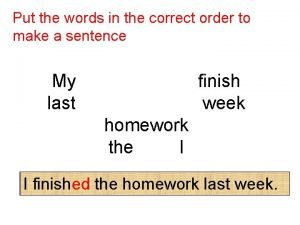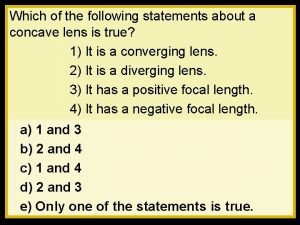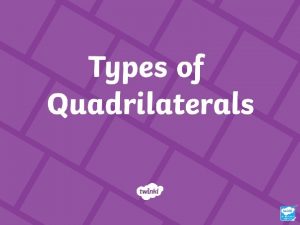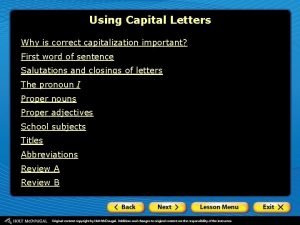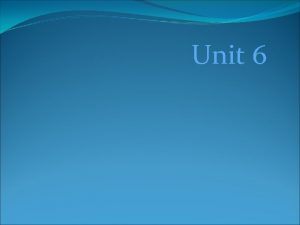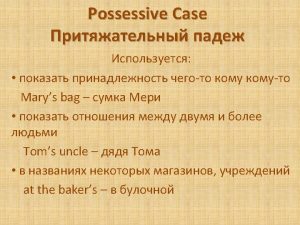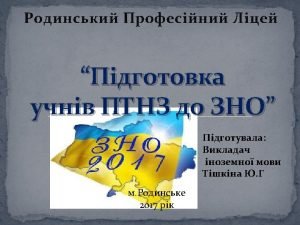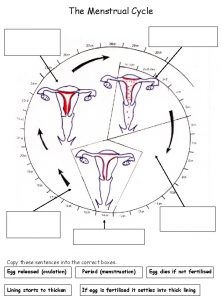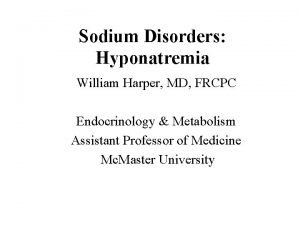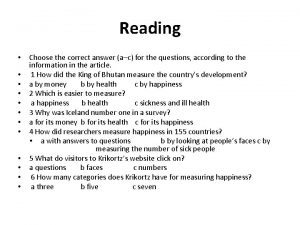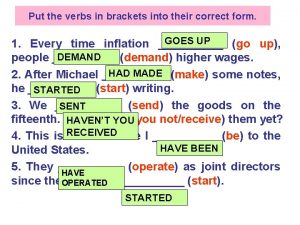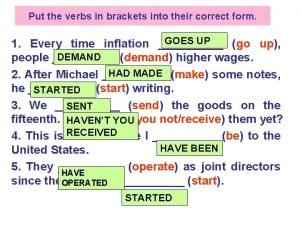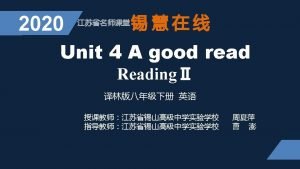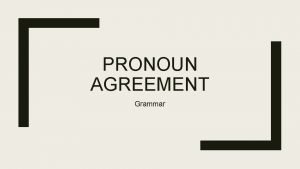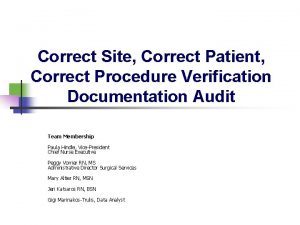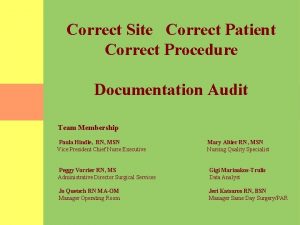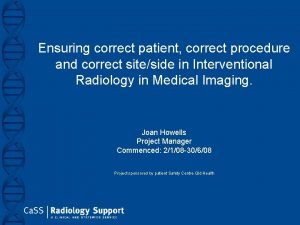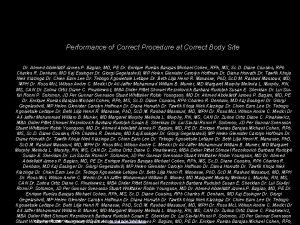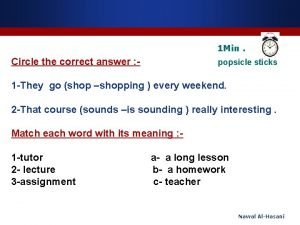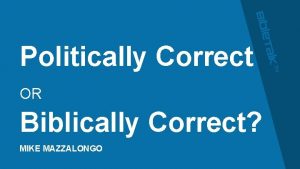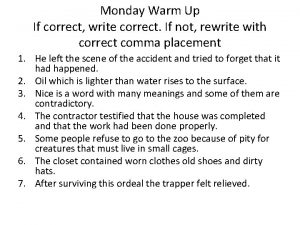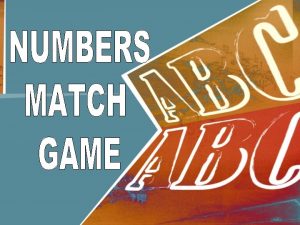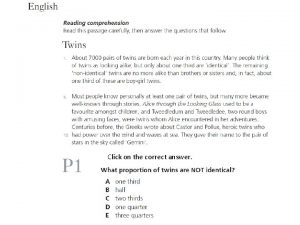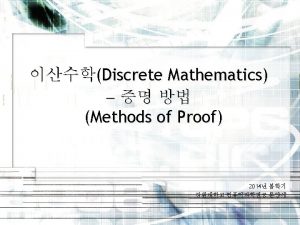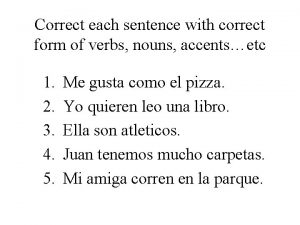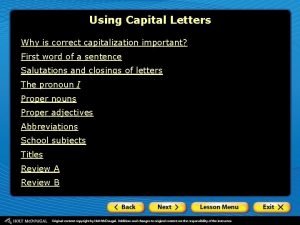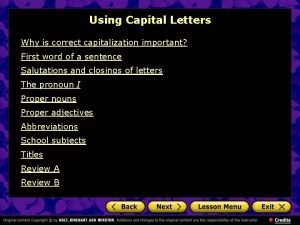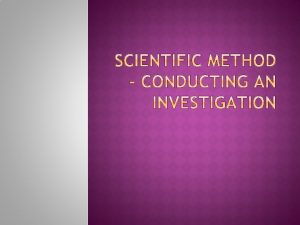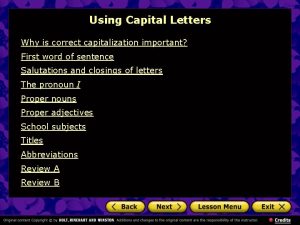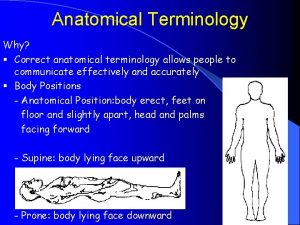What to correct How to correct Why to






















![Deficit View vs. Strengths View “Academic language […] is no one’s mother tongue” (Bourdieu Deficit View vs. Strengths View “Academic language […] is no one’s mother tongue” (Bourdieu](https://slidetodoc.com/presentation_image/94ae88628d63f11f84eea38cd320870b/image-23.jpg)








![Socio-literate choices “[An] understanding of when or why to use a particular grammatical form Socio-literate choices “[An] understanding of when or why to use a particular grammatical form](https://slidetodoc.com/presentation_image/94ae88628d63f11f84eea38cd320870b/image-32.jpg)

- Slides: 33

What to correct? How to correct? Why to correct? FOCUS ON FORM WITH MULTILINGUAL WRITERS Jennifer Mac. Donald @Jen. Mac_ESL jennifermacdonald. ca

“My paper looks like it’s bleeding!”

Definitions L 1: first language L 2: second or additional language Multilingual students/writers: students who use English as a second/additional language

Focus on form/grammar Explicit instruction, correction or feedback on: • Grammar • Syntax = structure of phrases and sentences • Lexis = vocabulary • Morphology = structure of words, e. g. suffix, prefixes, word endings (-s, -ing, etc. ) • Spelling • Punctuation

Language Rules Constitutive Regulatory

Grammar vs. style “Grammar — the principles constituting the syntactically and morphologically permissible expressions of a language — is not at all the same thing as style. Style involves skill. It involves making choices between alternatives that the grammar makes available. Those choices can make the difference between using the language brilliantly or using it ploddingly. ” Pullum, G. K. (2004). Ideology, power, and linguistic theory. Conference presentation given at Modern Language Association Annual Meeting. Philadelphia. Retrieved from http: //ftp. ling. ed. ac. uk/~gpullum/MLA 2004. pdf

Prescriptivism “A doctrine that holds certain features of a language to be incorrect and in need of replacement by other forms deemed correct on the grounds of logic, existence in classical or older forms of a language or use by ‘good’ writers. ” Prescriptivism (2004). In J. Swann et al. , A dictionary of sociolinguistics. Edinburg, United Kingdom: Edinburgh University Press

What is sociolinguistics? An orientation to the study of language that stresses the inter-relationship between language and social life, rather than focusing narrowly on language structure. Sociolinguistics (Sociolinguistic). (2004). In J. Swann et al. , A dictionary of sociolinguistics. Edinburg, United Kingdom: Edinburgh University Press.

Language varieties • Each has its own set of constitutive rules • Varieties can be defined by region (Regional dialects), social groups (African American Vernacular), context of use (Academic English) • Standard varieties have been codified and are used in schooling and the media • Linguistically equal • Any differences in status between varieties is not linguistically rooted; it’s societal inequalities being projected onto the varieties associated with certain groups

Grammar Correction Debate The Case Against Written Corrective Feedback: Truscott (1996) “[Many instructional, correction and feedback practices appear] to be guided by the underlying premise that students are able to correct/learn all the errors pointed out by the teacher. Such an approach, however, does not take account of the developmental stage [in terms of cognitive path of second language acquisition] of individual students and is unlikely to be effective because for some errors, students may simply lack the [developmental] readiness to correct them. ” Lee, I. (2013). Research into practice: Written corrective feedback. Language Teaching, 46(01), 108 -119. Truscott, J. (1996). The case against grammar correction in L 2 writing classes. Language Learning, 46(2), 327– 369.

Grammar Correction Debate “Over-emphasis on WCF as a means to enhance students’ written accuracy may, […] short-circuit students’ writing development. ” (in terms of creativity, risk-taking, etc. ) (Lee, 2013) Lee, I. (2013). Research into practice: Written corrective feedback. Language Teaching, 46(01), 108 -119.

Grammar Correction Debate Focused correction (correcting every instance of an error - comprehensive) ◦ vs. Unfocused correction (correcting only certain instances of errors – intensive) Direct correction (saying what the error is and where) ◦ vs. Indirect correction (giving “hints” to what/where the error is) Treatable errors (rule-governed - grammar, etc. ) ◦ vs untreatable errors (Non-rule-governed - word choice, style, etc. ) (Ferris 2002) Ellis, R. (2009). A typology of written corrective feedback types. ELT journal, 63(2), 97 -107.

Recommendations for WCF • Give indirect WCF to treatable errors (i. e. errors that students are able to self-correct because they are rule-governed) (Ferris 2001) • Give direct feedback to untreatable errors (errors that are not amenable to self-correction, such as word choice and word order) (Ferris 2001) • Students of lower language proficiency are likely to benefit from direct WCF (Ferris & Roberts 2001). • Error codes (indirect feedback) may not be helpful if teachers use the codes for grammar items that students have not yet mastered (Lee 1997; Ferris 2002). • Keep error codes short, and limited to items that students are actually able to fix • Overall, it may be best to use a combination of direct and indirect WCF to suit different learners, writing tasks and error types.

Put thought into error correction codes This is not helpful! Is “wrong word” a: • Word choice/lexical error (choosing between synonyms? ) • An errors of register/formality/discipline? • Is it a collocation error, where a word is dictated by the word(s) it pairs with? (E. g. at the park vs. on the bus? • A grammar error? (E. G. using the wrong article)?

Linguistic Diversity in Canada • English is L 1 of approximately 19 million Canadians (57% of the population) • French is L 1 of 22% of Canadian population • Languages other than English or French are L 1 of 21% of Canadian population • 28 million people in Canada reported using English as their dominant language (source: 2011 Census)

Linguistic Diversity at Canadian Universities • In 2014 there were 89 000 full time international students at Canadian universities • 11% of undergraduates and 28% of graduate students are international in Canada • How many at your institution? Universities Canada (2014) Quick Facts on Internationalization at Canadian Universities. Retrieved from: http: //www. univcan. ca/universities/facts-and-stats/internationalization-atcanadian-universities-quick-facts/

Three Circles of English (Kachru, 1992) INNER CIRCLE +Canada! OUTER CIRCLE EXPANDING CIRCLE Kachru, B. B. (1992). The other tongue: English across cultures. University of Illinois Press.

Student Preferences “Surveys of student opinion about teacher feedback have consistently affirmed the importance that L 2 students place on receiving grammar correction from their teachers (Cohen, 1987; Ferris, 1995 b; Hedgcock & Lefkowitz, 1994; Leki, 1991; Radecki & Swales, 1988). Though Truscott argues that although “students believe in correction. . . that does not mean that teachers should give it to them” (1996, p. 359)” Ferris, D. (1999). The case for grammar correction in L 2 writing classes: A response to Truscott (1996). Journal of Second Language Writing, 8(1), 1– 11. http: //doi. org/10. 1016/S 10603743(99)80110 -6

What makes good writing? Accuracy of grammar, spelling and punctuation Accuracy of and variety in word choice Variety and complexity in sentence structure Clear organization and structure of text Coherence and flow Clear argument and logic Suitability of register, genre and adherence to disciplinary conventions Appropriate use of evidence, examples, etc. from source material Appropriate use of citation and referencing practices

Investigating the relationship between the use of English for academic purposes and academic attainment Method: ◦ Using the diagnostic language assessment procedure known as Measuring the Academic Skills of University Students (MASUS 2), as well as informal analysis of assignment feedback and interviews with students, students' performance in assignments in three subject areas was investigated. Results: ◦ Results confirmed that there was a strong correlation between the overall scores students obtained in the MASUS language assessment and their attainment as represented by their assignment grade. ◦ However, analysis of the five separate categories of the MASUS scores showed that only the scores for the category, use of source material, correlated strongly with student attainment and that the scores on the more explicit language categories, structure and development of the text, academic writing style, and grammar, did not. Donohue, J. P. , & Erling, E. J. (2012). Investigating the relationship between the use of English for academic purposes and academic attainment. Journal of English for Academic Purposes, 11(3), 210– 219. http: //doi. org/10. 1016/j. jeap. 2012. 04. 003

Should we spend so much time on grammar? “The student said [to language teacher, about courses in their discipline/degree-program]: ‘This was written for Dr Oades. I put endings on verbs and nouns for you, but he gives me a B without them. (Johns, 1988: 57)’” Johns, A. M. (1988). The discourse communities dilemma: Identifying transferable skills for the academic milieu. English for Specific Purposes, 7(1), 55 -59.

What to do? Change of mindset? • Move from procedural knowledge of academic writing to metalinguistic and sociolinguistic declarative knowledge of language • Foster “socio-literacy” in yourself, your marking team and your students. • Move from role of writing specialist to language specialist Johns, A. (1997). Text, role, and context: Developing academic literacies. Cambridge: Cambridge University Press.
![Deficit View vs Strengths View Academic language is no ones mother tongue Bourdieu Deficit View vs. Strengths View “Academic language […] is no one’s mother tongue” (Bourdieu](https://slidetodoc.com/presentation_image/94ae88628d63f11f84eea38cd320870b/image-23.jpg)
Deficit View vs. Strengths View “Academic language […] is no one’s mother tongue” (Bourdieu et al. , 1994, p. 8)” Bourdieu, P. , Passeron, J. -C. , & Martin, M. D. S. (1994). Academic Discourse: Linguistic Misunderstanding and Professorial Power (1 edition). Stanford, Calif: Stanford University Press.

Grammar of Choice “Far from being a linguistic straightjacket, grammar is a flexible, incredibly rich, system that enables proficiency speakers to express meaning in a way appropriate to the context, to how they wish to present themselves, and to the particular perspective they wish to contribute. Although accuracy is an issue in grammar, so is meaningfulness and appropriateness of use. ” Larsen-Freeman, Diane. (2009). Teaching and testing grammar. In M. Long and C. Doughty (Eds. ) The Handbook of Language Teaching (pp. 518 -542). Malden, MA: Blackwell.

Grammar of Choice “If Trump won the election, I’d eat my hat. ” “If Trump wins the election, I’ll eat my hat. ” What’s the difference in meaning? How does choosing one over the other contribute to how you position yourself? Lots of other examples in: Larsen-Freeman, Diane. (2009). Teaching and testing grammar. In M. Long and C. Doughty (Eds. ) The Handbook of Language Teaching (pp. 518 -542). Malden, MA: Blackwell.

Dealing with linguistic variation How do you respond if a student writes the following: • My neighbor told me the product is available in various colors. • It was a difficult situation but I did the needful.

Practical Suggestions • Build declarative knowledge of • both constitutive and regulatory rules • sociolinguistics of English in use both globally and locally • Great text to understand influence of multilingual writers’ L 1: Swan, M. , & Smith, B. (2001). Learner English: A Teacher’s Guide to Interference and Other Problems. Cambridge University Press.

Corpus-based English Grammars Longman Grammar of Written and Spoken English Cambridge Grammar of English Collins COBUILD English Grammar for English Language Teachers

Garner’s Modern English/American Usage (2016) Graphic from: http: //www. businessinsider. com/bryan-garner-interview-english-usage-google-ngrams-big-data-2016 -4

Consciously Constructing Assignments: How much does grammar matter? Dealing with Language – Pre-Writing • Consciously Constructing Assignments • Defining Values and Marking Criteria Best practice: For each writing assignment, clearly define focus and values, and develop a clear rubric to guide both students and markers

Treatment of Error in Second Language Student Writing: Major Issues Teacher preparation Grammar for ESL teaching Practice in identifying written error and giving feedback Practice in developing and presenting mini-lessons on grammar and editing strategies Error treatment Teacher feedback that is sensitive to student needs and instructional context Consciousness-raising about importance of accuracy and editing strategies Strategy training Mini-lessons Practice and accountability From Ferris, D. R. (2004). The “Grammar Correction” Debate in L 2 Writing: Where are we, and where do we go from here? (and what do we do in the meantime …? ). Journal of Second Language Writing, 13(1), 49– 62.
![Socioliterate choices An understanding of when or why to use a particular grammatical form Socio-literate choices “[An] understanding of when or why to use a particular grammatical form](https://slidetodoc.com/presentation_image/94ae88628d63f11f84eea38cd320870b/image-32.jpg)
Socio-literate choices “[An] understanding of when or why to use a particular grammatical form should be part of an [English] teacher’s understanding of grammar so as to avoid the teacher’s giving students easy answers in the moment that contribute to confusion later on and so that students understand that they have a choice and what the consequences are of making that choice. ” Larsen-Freeman, Diane. (2009). Teaching and testing grammar. In M. Long and C. Doughty (Eds. ) The Handbook of Language Teaching (pp. 518 -542). Malden, MA: Blackwell.

Thank you! Jennifermacdonald. ca @Jen. Mac_ESL
 Andreas carlsson bye bye bye
Andreas carlsson bye bye bye Dont ask why why why
Dont ask why why why Linda has just walked outside with grandmother
Linda has just walked outside with grandmother Why-why analysis
Why-why analysis Wh tongue twister
Wh tongue twister Does the table represent a function why or why not
Does the table represent a function why or why not What does a table represent
What does a table represent Why or why not
Why or why not Contoh laporan root cause analysis
Contoh laporan root cause analysis Put letters in correct order
Put letters in correct order Which statement about concave lenses is true?
Which statement about concave lenses is true? Match the rhyming words
Match the rhyming words Match each word to its meaning
Match each word to its meaning Professor capitalized
Professor capitalized Vocabulary choose the correct answer
Vocabulary choose the correct answer Underline the correct words in bold
Underline the correct words in bold Mark the correct variant to complete the sentence
Mark the correct variant to complete the sentence Cycle copy
Cycle copy The gray-brown haze often found over large cities is called
The gray-brown haze often found over large cities is called Di vs siadh vs csw
Di vs siadh vs csw Round to three decimal places
Round to three decimal places Rounding decimal places
Rounding decimal places A-la carte service sequence
A-la carte service sequence Short story with relative clauses
Short story with relative clauses Complete the phrases using the correct reflexive pronoun
Complete the phrases using the correct reflexive pronoun Rearrange the following sentences:
Rearrange the following sentences: Choose the correct answers ac
Choose the correct answers ac Read the dialogue and choose the correct answer
Read the dialogue and choose the correct answer Put the correct form of the verb in brackets
Put the correct form of the verb in brackets Put the verbs in brackets into correct form
Put the verbs in brackets into correct form Photo
Photo List the following events in the correct order
List the following events in the correct order Correct pronoun case
Correct pronoun case Adequate planning leads to the correct completion of work
Adequate planning leads to the correct completion of work


